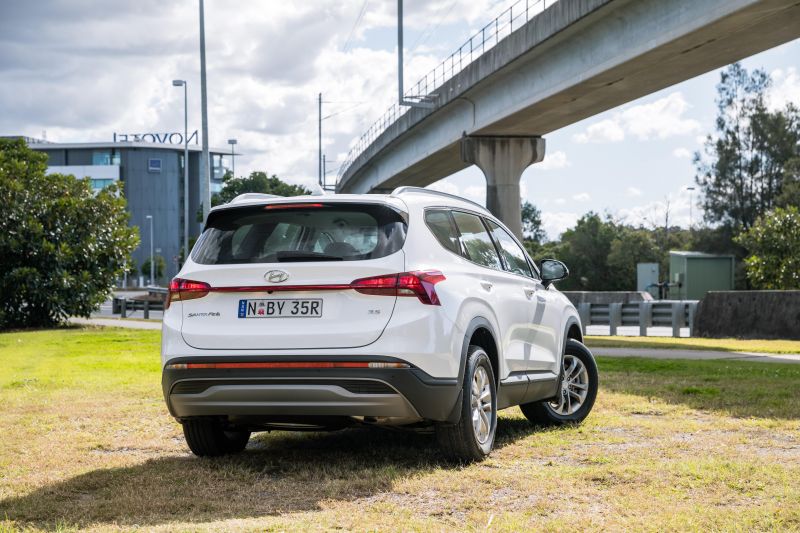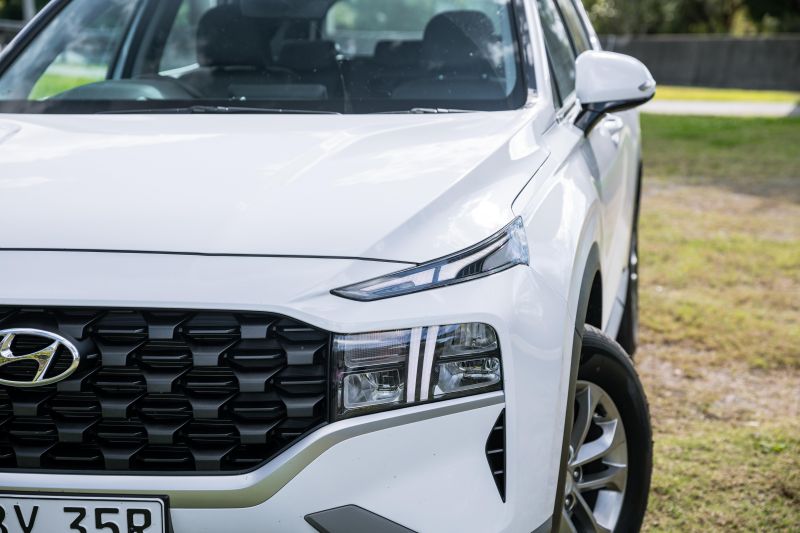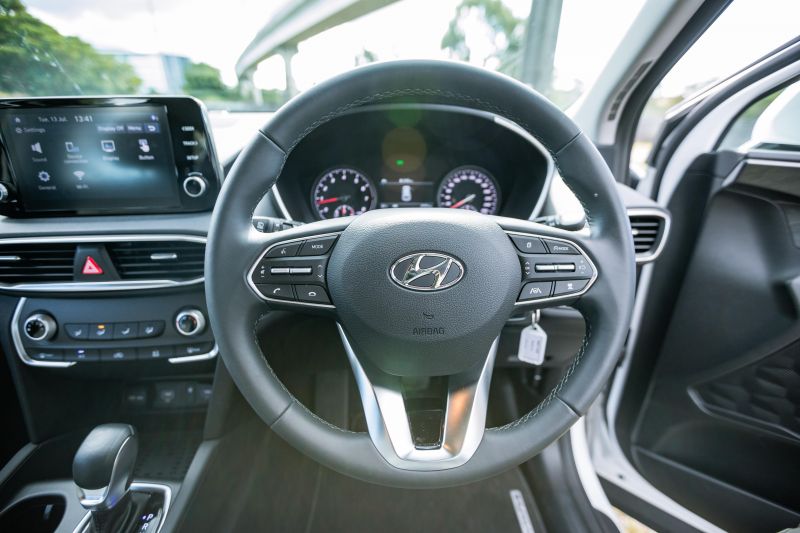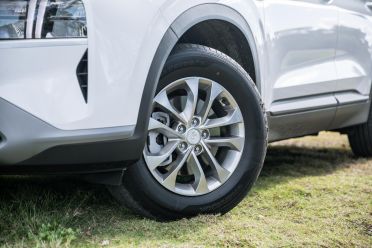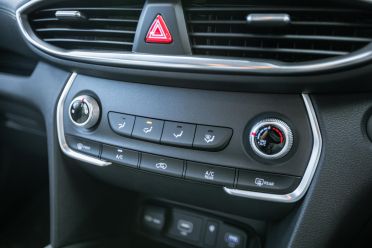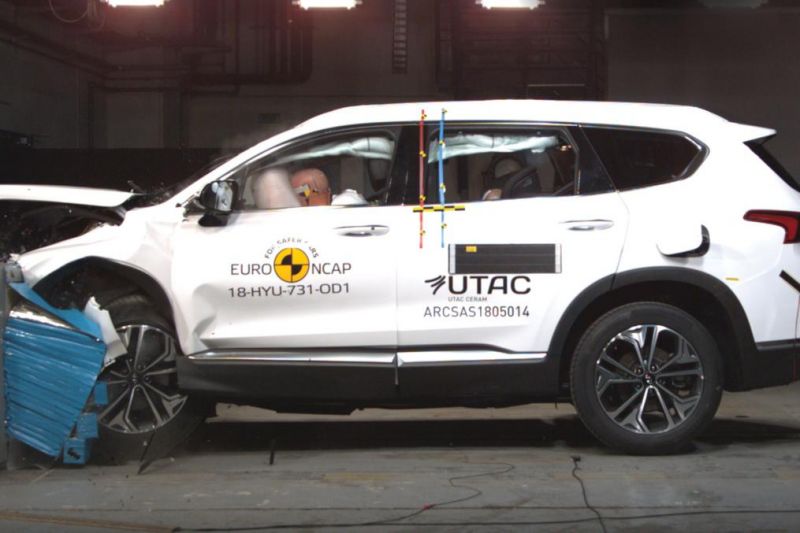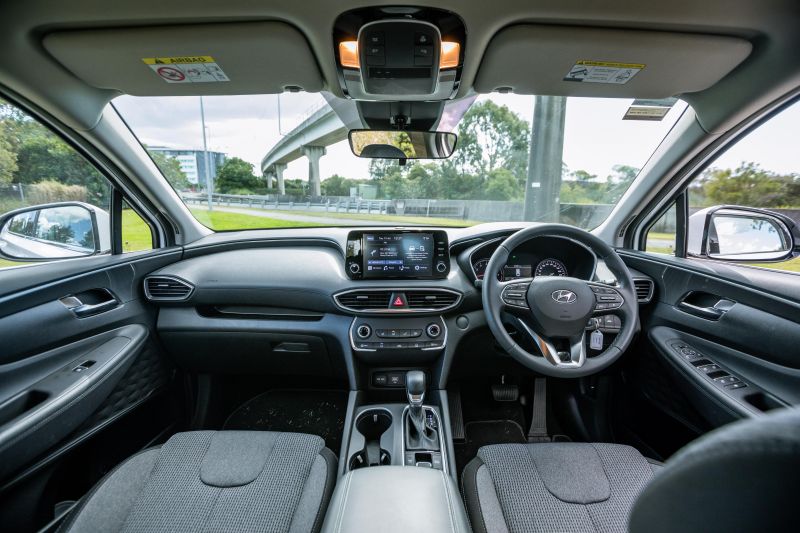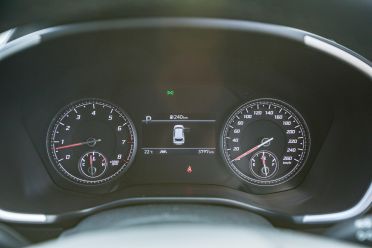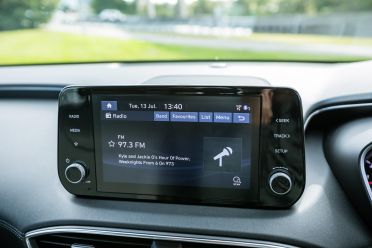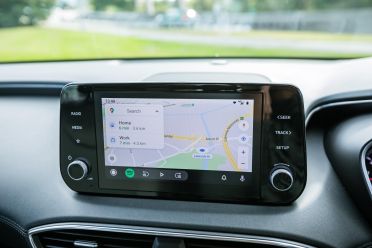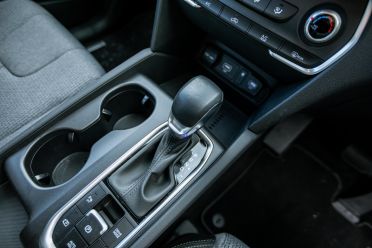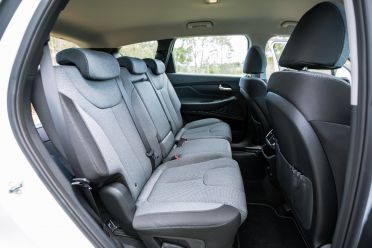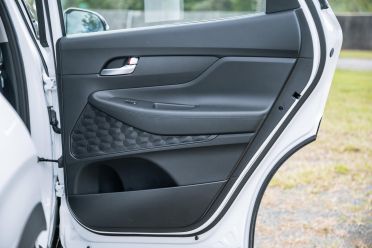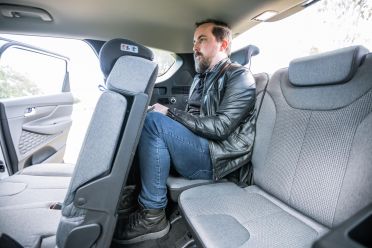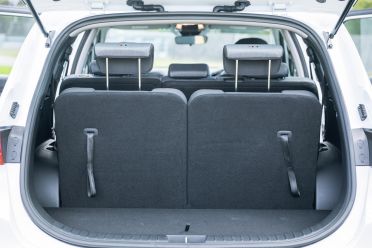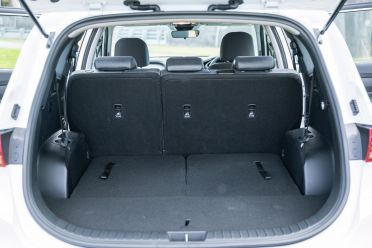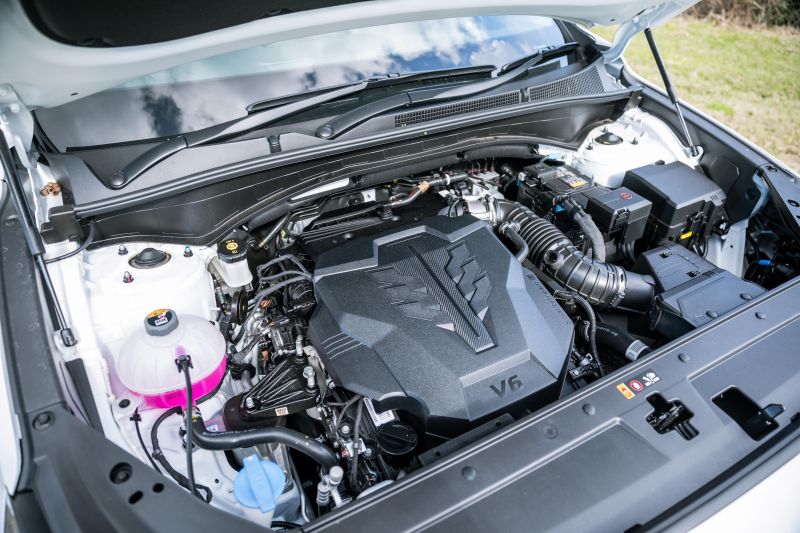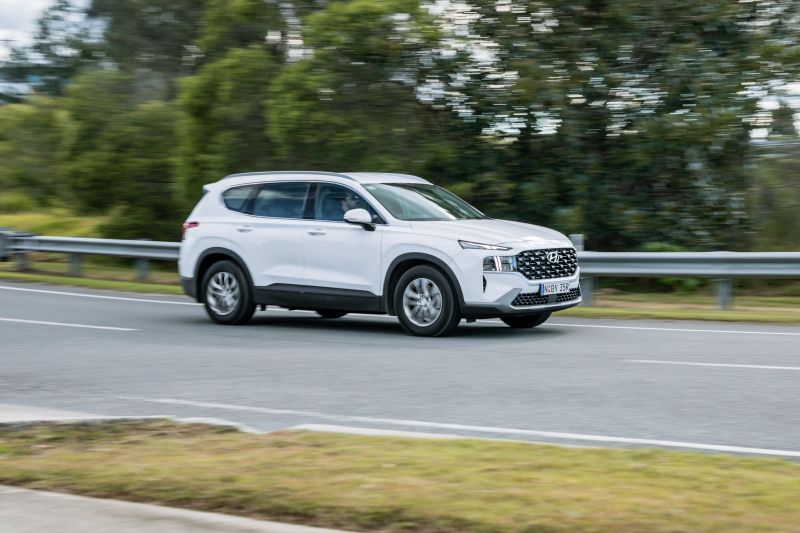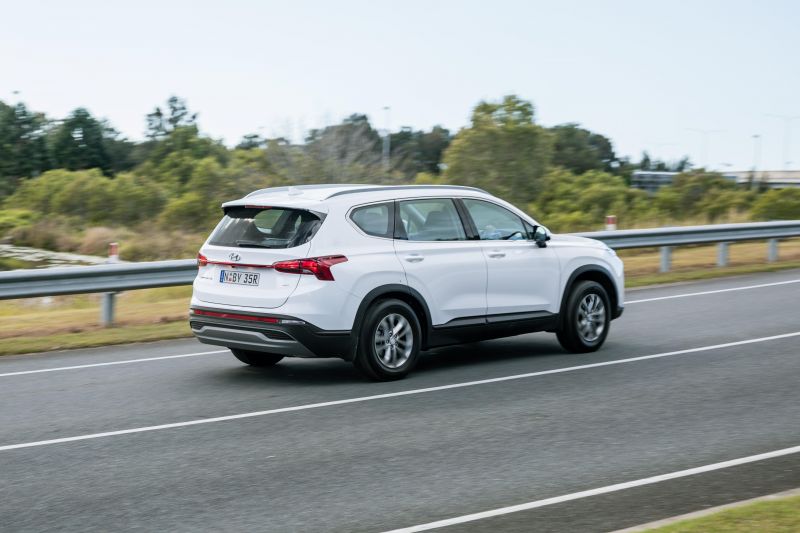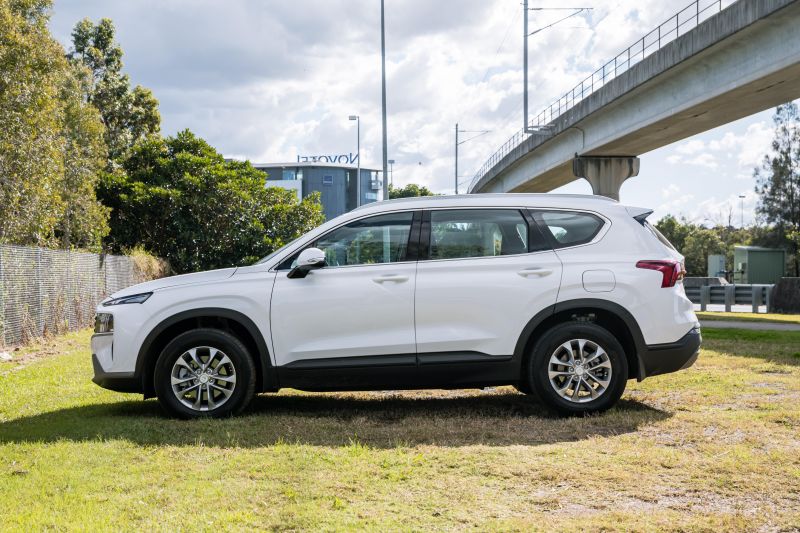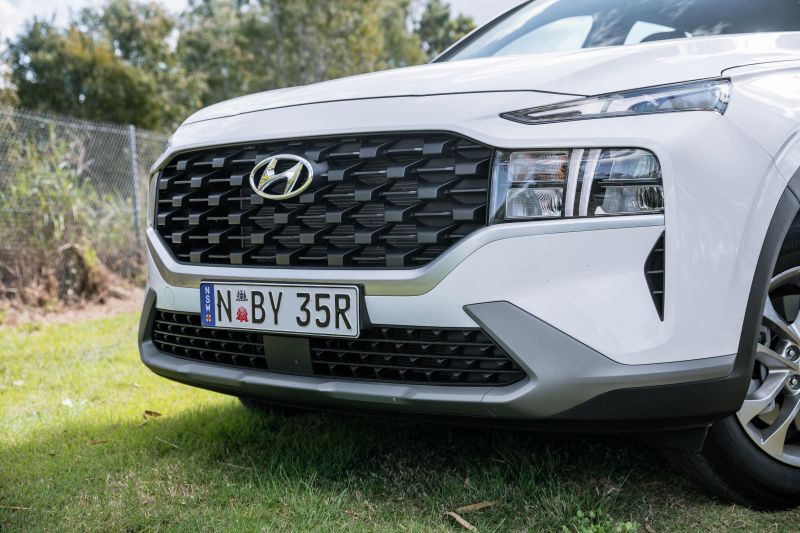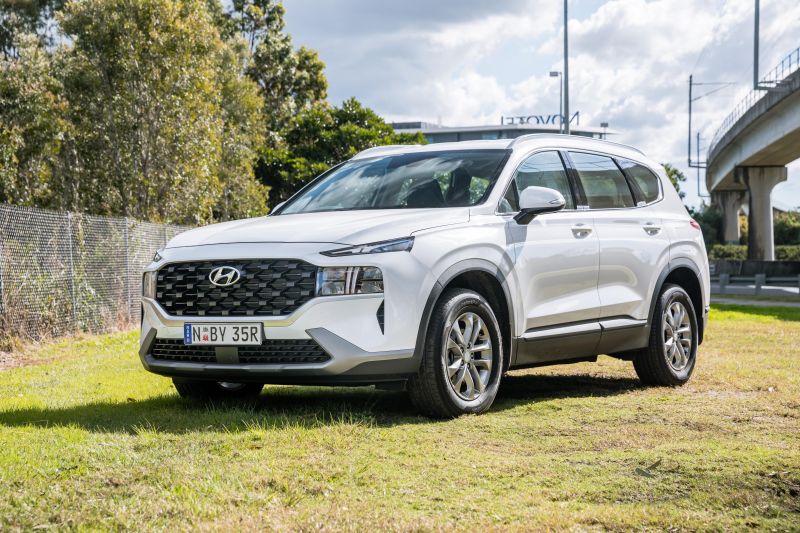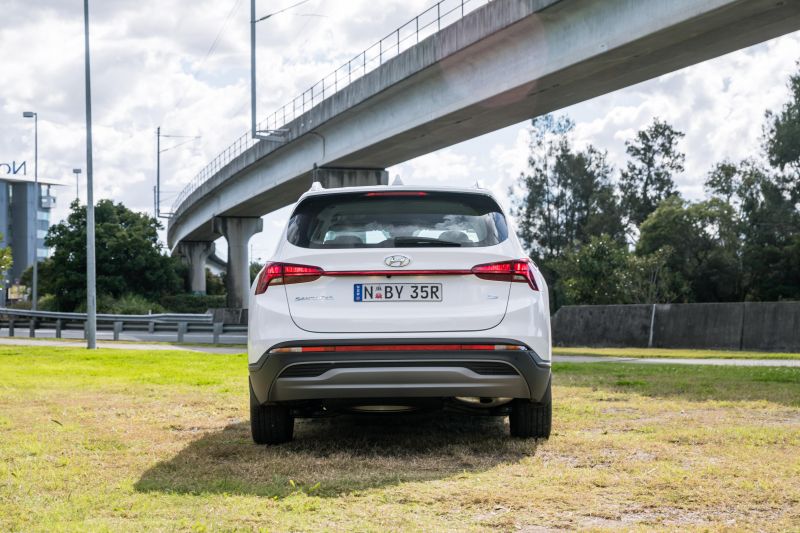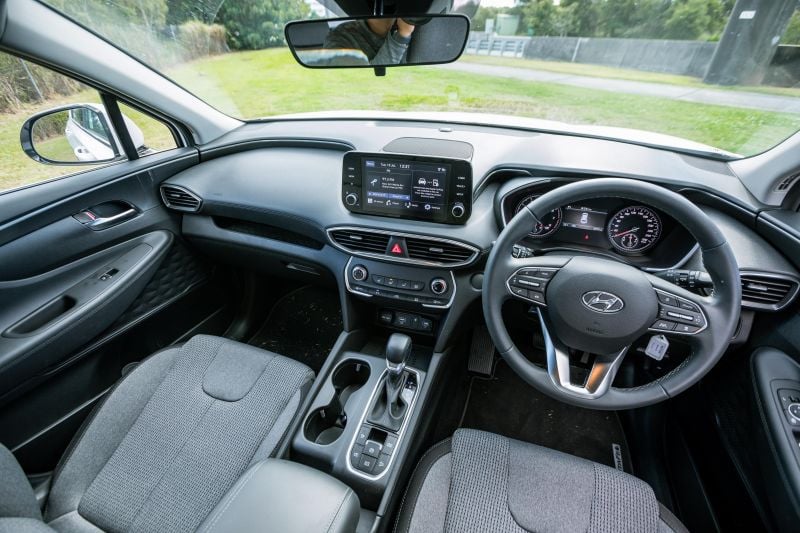It doesn’t look like it, but the ‘facelifted’ Hyundai Santa Fe is basically a new-generation model.
The company has moved its large (but not largest) SUV to a new platform shared with the redesigned Kia Sorento offering more space, new tech and available electrified powertrains (coming soon), but there mustn’t have been much money left for other changes.
Nowhere in the line-up is that more apparent than the base model, which misses out on some of the interior enhancements afforded to higher variants.
All Santa Fe models have an exterior scarcely different in appearance to the old car, with the most obvious changes limited to the headlights, grille and tail lights. It won’t win any beauty contests but it isn’t as controversial as the new Tucson, continuing to feature restrained side detailing.
Corporate cousin Kia is jockeying for Hyundai’s spot in the sales charts, and no two products of Hyundai and Kia are more evenly matched in sales than the Santa Fe and Sorento.
Both cars also continue to offer a cheaper petrol V6 option for Australia and New Zealand, even though their line-ups in other countries include more modern turbocharged four-cylinder engines. Australia will add a 1.6-litre turbo petrol hybrid option before the end of 2021.
The Hyundai Motor Group still hasn’t figured out how to engineer its mainstream SUVs to feature all-wheel drive, a petrol V6 engine, and right-hand drive, so that means the V6 is front-wheel drive-only. If you want all-wheel drive, you’ll need to opt for the diesel, or wait for the hybrid.
Refreshingly – and again, like its Kia cousin – the Santa Fe is available with both powertrains across all four of its trim levels.

How much does the Hyundai Santa Fe V6 FWD cost?
This is the cheapest way to get into a 2021 Hyundai Santa Fe. This base model, aptly named ‘Santa Fe’, is priced at $44,700 before on-road costs in front-wheel drive, V6 guise. Opting for the diesel engine adds $3500 to the price.
The next trim level up the range is the Active, which is priced at $48,300 and $51,800 before on-roads for the petrol and diesel, respectively.
By comparison, the base Kia Sorento S is priced at $46,850 before on-roads with the V6 and $49,850 list with the diesel.
Based on a Sydney postcode, the Santa Fe V6 has a drive-away price of $49,305. So while the Santa Fe undercuts the Sorento in terms of list price, the Kia still comes out ahead (just) with a sharper drive-away price of $49,290.
White Cream (pictured) and Lagoon Blue mica are the two standard paint colours, with Typhoon Silver and Abyss Black metallic costing an extra $695.
Other similarly-priced rivals include the Mazda CX-8 Touring FWD ($48,990 drive-away), Mazda CX-9 Sport FWD ($47,990 drive-away) and Toyota Kluger GX ($47,650). Nissan has a new Pathfinder coming, though it isn’t due until 2022 and the company has exhausted stock of the old one.
There are also slightly narrower rivals that still include three rows of seating, like the Skoda Kodiaq 132TSI ($49,490 drive-away) and Volkswagen Tiguan Allspace 110TSI Comfortline ($46,201 drive-away), though being stretched versions of mid-size SUVs, it doesn’t feel quite as roomy inside as the Santa Fe.
What do you get?
There’s a full complement of active safety technology (more on that below) plus LED headlights, a reversing camera and rear parking sensors, so the base Santa Fe gets the essentials down pat.
It also includes an 8.0-inch touchscreen infotainment system with wireless Apple CarPlay and Android Auto, plus wireless phone charging, an electronic parking brake, six-speaker sound system, 17-inch alloy wheels, leather-accented steering wheel and shifter, and a 4.2-inch colour display in the instrument cluster.
There’s not much in the way of luxury accoutrements, though. You’ll need to step up to the Active for features like keyless entry and start, dual-zone climate control, leather upholstery, rear privacy glass and rain-sensing wipers.
The base model’s feature list is almost identical to the base Sorento S. It’s a bit skimpy compared to the CX-9 Sport, which offers satellite navigation, DAB+ digital radio, keyless start, rain-sensing wipers, tri-zone climate control and a head-up display.
The Kodiaq 132TSI has a raft of luxury features like ambient lighting, adaptive LED headlights and a digital instrument cluster, but unlike the Hyundai, Kia and Mazda, Skoda bundles much of the active safety features in an option package.
Is the Hyundai Santa Fe V6 FWD safe?
The previous Hyundai Santa Fe’s five-star ANCAP rating has been carried over. That rating was based on an adult occupant protection score of 94 per cent, child occupant protection of 86 per cent, pedestrian protection of 67 per cent and safety assist of 78 per cent.
It comes standard with low- and high-speed autonomous emergency braking with pedestrian/cyclist detection and junction assist. The system uses both a camera and radar.
All Santa Fe models also come standard with the following safety equipment:
- Blind-spot assist
- Driver attention alert
- Lane-keep assist
- Lane Following Assist
- Rear cross-traffic assist
- Rear occupant alert
- Adaptive cruise control with stop/go
- Automatic high-beam
- Reversing camera
- Rear parking sensors
That’s a solid complement of safety equipment for this price point, though there’s more equipment as you climb the range ladder. The Active adds safe exit assist and front parking sensors, the Elite adds a more sophisticated rear occupant alert, and the Highlander adds a surround-view camera and low-speed reverse AEB.
Like the Sorento, there’s curtain airbag coverage for the first two rows only, plus front and front-side airbags.
What is the Hyundai Santa Fe V6 FWD like on the inside?
The Santa Fe’s interior will be very familiar to anyone who drove a previous-generation example. Everything from the dashboard layout to the cloth upholstery is identical to the Active we drove last year.
There are only detail changes, like the replacement of naff fake wood trim for predictable, vaguely carbon fibre-looking trim, plus new touch-capacitive buttons mercifully limited to the surrounds of the touchscreen.
That means the dashboard is closer to the i30 hatchback in design than clean-sheet interiors like that of the new 2021 Tucson. It’s not a bad thing, as the layout of the switchgear is logical and almost all of it uses good old-fashioned buttons.
The attractive dual-cowl look of the dashboard remains, with soft-touch materials used across much of the dashboard and the door tops. There’s also a neat rubberised shelf on the passenger side of the dash, plus stitching details to make the dash look leather-wrapped.
The seats are unchanged, which is a pleasant surprise. Not only do they have attractive upholstery, but they’re also comfortable. We understand many families will prefer the leather trim of the Active for cleaning purposes but the base model’s cloth is hardly a step down.
The doors are also carried over, with similar ‘rocky’ textured material to the Kia Seltos and a mix of soft-touch plastics and leatherette for the top half. The only exception is a swath of hard plastic near the door handle.
Those who like to rest their arms on the top of the door will find there’s enough width here to do so, and the Santa Fe’s beltline isn’t too high as to make this seating position uncomfortable.
The 8.0-inch touchscreen infotainment system looks (not so) fresh out of an i30, and lacks the slick user interface of Hyundai’s new 10.25-inch units.
That said, it’s just as responsive and useable as ever, even if its UI is a bit simplistic. There are still voice memo and Quiet Mode functions available, albeit no Sounds of Nature.
There’s wireless Android Auto and Apple CarPlay, something the Elite and Highlander don’t get with their 10.25-inch units. The trade-off is the base and Active lack those models’ factory satellite navigation.
We experienced but one dropout with the wireless Android Auto, which happened to be on a rural hill right next to a radio tower. Otherwise, it was faultless.
At the base of the centre stack, you’ll find two USB-A outlets plus a charging pad.
There are cupholders and a fairly large bin in the centre console, the latter with a padded lid, plus bottle holders in each door that can easily fit a 1L bottle.
We’re happy to see the 1970s Laminex-looking “wood” get the chop, but the faux carbon fibre trim doesn’t provide much of a contrast as it’s quite dark.
It’s also a bit puzzling the base model doesn’t get up-spec Santa Fe variants’ “floating” centre console with the large storage cavity underneath, though we suspect if it did there’d be plenty of button blanks. The Active, for example, has a row of blanks.
Another reason the base model has a carryover dash is due to its manual air-conditioning. Nope, you won’t find climate control here.
The instrument cluster has been upgraded with a 4.2-inch colour display, which is flanked by neat, analogue dials. If you want a fully digital display and Hyundai’s trick new Blind Spot View Monitor, you’ll have to step all the way up to the Highlander.
Stepping into the rear of the cabin, you’ll find a comfortable bench that splits and folds 60:40. You can slide either side of the second row to free up more room for third row occupants, while there are also two USB-A outlets at the base of the centre console plus second-row air vents and a fold-down centre arm rest.
A switch on the side of the kerbside seat automatically tumbles and slides the seat forward.
There are only child-seat anchor points in the second row: three top-tether, and an Isofix point for each of the outboard seats.
Adults measuring 180cm or less will fit in the third row with decent headroom but, while the second row can be slid forward to secure a relatively comfortable amount of legroom, we recommend the third row only for shorter trips or smaller occupants.
Those occupants get to enjoy their own air vents and fan speed adjustment, plus a cupholder each and a 12V outlet. Headroom back here feels better than a CX-9, owing to the Santa Fe’s slightly boxier shape.
In the cargo bay, you’ll find buttons to fold the second row flat. With the third row up, there’s 130L of space – scarcely enough for a typical suitcase. Pull the straps to drop that row and there’s 571L of space, though you can expand this to 782L by sliding the second row forward.
Press the buttons to drop the second row and there’s 1649L. A full-size spare is located under the vehicle.
What’s under the bonnet?
Open the gas strut bonnet – no prop rod here! – and you’ll find a naturally-aspirated 3.5-litre V6 petrol engine producing 200kW of power and 331Nm of torque.
It’s mated with an eight-speed torque-converter automatic transmission. As noted earlier, the V6 Santa Fe is only available with front-wheel drive.
Unsurprisingly, the Sorento V6 has the same outputs. A Mazda CX-9 has less power but more torque (170kW/420Nm), while a Kluger V6 outpunches the Santa Fe in both (218kW/350Nm).
Like the CX-9, the Skoda Kodiaq features a turbocharged four-cylinder engine, though it produces only 132kW of power and 320Nm of torque.
How does the Hyundai Santa Fe V6 FWD drive?
The Santa Fe is a large vehicle with a high-output V6 engine powering the front wheels. Those ingredients, when combined, don’t usually bode well for a vehicle’s dynamics.
Fortunately, the Santa Fe drives better than the sum of its parts. Hyundai’s engineers have managed to exorcise most of the demons that would be present in such a vehicle, and the result is a car that’s pleasant to drive.
If you’re not judicious with the throttle, you will encounter some wheelspin, particularly if you’ve come to a complete stop and you’re turning a corner. On an unsurfaced road, you’ll also need to modulate your throttle inputs as it can get a bit squirrelly if you’re too heavy on the accelerator.
Otherwise, the Santa Fe is well-mannered. There’s very little torque steer – even if you plant your foot down, the steering wheel doesn’t tug to one side, nor do the front tyres squeal. It also wasn’t a handful on slick roads, as we learned on one particularly drizzly day.
The handling is quite balanced and the Santa Fe doesn’t feel overly nose-heavy. Body roll and understeer are also well controlled, and the centre of gravity feels lower than in many crossovers.
The ride is well-damped, if on the firmer side. You’ll know when you drive over an expansion joint or a manhole cover, but the impact is still well suppressed and doesn’t reverberate through the structure.
The steering might lack that last bit of feel but the weighting is good. We didn’t even bother with Sport mode – it makes the steering feel artificially heavy, and throttle response is already more than satisfactory in the default and Eco drive modes.
The V6 engine is a bit old-school in the way it sounds and feels. It’s lovely and quiet on idle but there’s a bit of a snarl when you accelerate, somewhat reminiscent of the dearly departed Holden ZB Commodore.
It’s perhaps not quite as quick as it sounds, though, and will need to be worked a little harder on steeper grades. There are also no features like cylinder deactivation or automatic stop/start to help reduce fuel consumption.
We had no complaints with the eight-speed automatic transmission, which is well-matched to the engine and refined in its operation. There’s a bit of wind noise at highway speeds and a smidgeon of tyre roar over coarse-chip roads, but otherwise the Santa Fe’s overall refinement is hard to fault.
The lane-keep assist makes its presence consistently felt. That means it works better than some rivals’ systems, but also means it can be a bit intrusive.
Fortunately, you can switch it off with the press of a button, though it’ll default to on. Hyundai’s Lane Following Assist continues to impress with its competence and, combined with the adaptive cruise control, makes highway driving a breeze.
If you want to tow, the V6 Santa Fe actually has the same towing capacity as the diesel – 750kg unbraked, 2500kg braked.
Overall, the Santa Fe feels scarcely larger than a Tucson to drive and it feels more wieldy in low-speed manoeuvres than a Mazda CX-9. My seat-of-the-pants impression is that the handling is ever so slightly sharper than that of a Kia Sorento, but only a back-to-back drive will prove that.
Ride quality feels ever so slightly better than the previous generation, but we wouldn’t say it feels massively different to drive. That’s no bad thing – we liked the way the last generation drove, and we like this one, too.
How much does the Hyundai Santa Fe V6 FWD cost to run?
Like the wider Hyundai range, the Santa Fe is covered by a five-year, unlimited-kilometre warranty. That’s two years down on Kia’s.
We averaged 10.1L/100km over our test loop, which includes inner-city, suburban and highway driving. Over the course of a week, that rose to only 10.2L/100km, though there was some country driving in addition to typical urban commuting.
We actually bested the claimed combined rating of 10.5L/100km, while also using less fuel than a Sorento V6 on the same test loop (10.5L/100km).
In contrast, the CX-9 has a combined rating of 8.4L/100km but in the real world that’s hard to reach. The Kluger V6 has a rating of 8.8L/100km, while the Kodiaq uses just 7.6L/100km.
If stellar fuel economy is a top priority, it’s worth either shelling out more for the diesel or waiting for the Santa Fe Hybrid. Toyota also finally offers a hybrid version of the Kluger in Australia.
The Santa Fe V6 runs on 91 RON regular unleaded fuel and has a 67L fuel tank. It emits 244g/km of CO2, compared to 160g/km for the diesel. The diesel also sips just 6.1L/100km, but it does cost an extra $3500.
The petrol V6 engine has its first five services capped at $399, with servicing required every 12 months or 15,000km, whichever comes first.
That’s pricier than the $250 Toyota charges per service for its pricier Kluger, but lines up with the CX-9 and undercuts the Sorento by almost $400 over five years.
CarExpert’s Take on the Hyundai Santa Fe V6 FWD
The new Hyundai Santa Fe mightn’t look all that different to the old one or feel that much different to drive, but that’s no bad thing.
We already liked the previous model for its brand of pleasant all-round competence, and the new car further burnishes those credentials.
The V6 engine isn’t the thriftiest or most high-tech powertrain out there but it has plenty of grunt and doesn’t sound half bad, either. The Santa Fe also handles well for a large, front-wheel drive vehicle with a powerful V6.
The base Santa Fe may look identical to the last one inside but, like that car, it has a logically laid-out interior with material quality that’s hard to fault.
Hyundai also appears to have listened to our criticisms about its limited availability of LED headlights, with the superior technology joining a feature list that gets the fundamentals right but misses out on some niceties.
Like the Kia Sorento S, the base Santa Fe undercuts the base Toyota Kluger. But Mazda’s worthy CX-9 undercuts all of them and packs an impressive amount of kit even in base Sport grade.
The large, car-based crossover segment doesn’t really have any duds, so the Santa Fe has some tough competition. Nevertheless, it stacks up well.
Click the images for the full gallery





